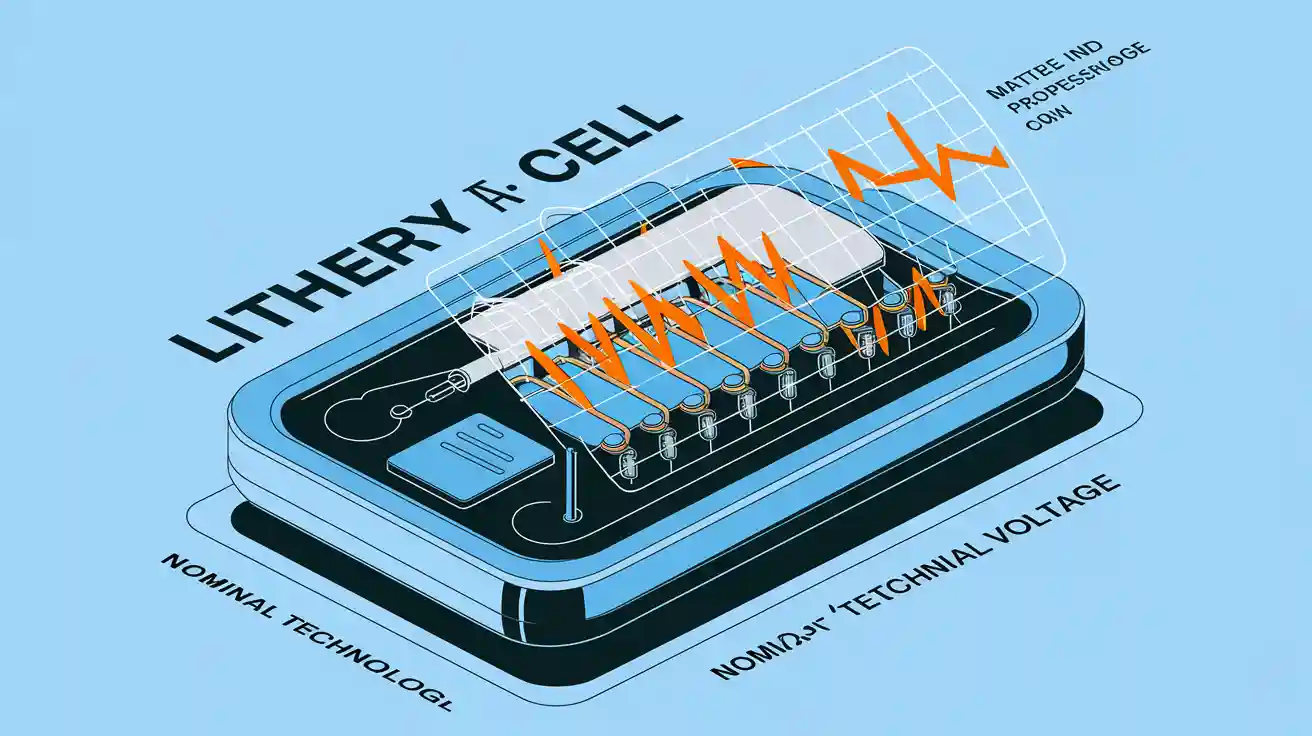
Определение в одном предложении
Номинальное напряжение - это стандартизированное среднее напряжение, на которое рассчитан элемент или блок аккумулятора при обычной эксплуатации, служащее ориентиром для проектирования системы и совместимости устройств.
Подробное объяснение
Номинальное напряжение (иногда называемое "именным напряжением") представляет собой среднее напряжение, поддерживаемое батареей на протяжении большей части цикла разряда. Это не максимальное (полностью заряженное) или минимальное (полностью разряженное) напряжение, а скорее удобное значение, упрощающее выбор батареи, интеграцию системы и маркировку продукта. Например, литий-ионный элемент обычно маркируется как 3,6 или 3,7 В, хотя его фактическое напряжение варьируется от 4,2 В (полностью заряжен) до 3,0 В (полностью разряжен). Эта конвенция определена международными стандартами, такими как IEC 61960, и широко распространена в аккумуляторной промышленности (Университет аккумуляторов).
Основные компоненты номинального напряжения
- Химический состав аккумулятора: Номинальное напряжение определяется электрохимическими свойствами материалов анода и катода батареи. Например, литий-ионные (LiCoO₂/графитовые) элементы рассчитаны на напряжение 3,6-3,7 В, а LiFePO₄ - на 3,2 В.
- Кривая разряда: Номинальное напряжение обычно устанавливается вблизи середины кривой разряда батареи, что отражает напряжение, наиболее часто наблюдаемое во время эксплуатации (см.Клеточное поведение).
- Стандартизация: Международные стандарты (например, IEC 61960) определяют номинальные напряжения для различных химикатов, обеспечивая глобальную совместимость и безопасность.
- Дизайн системы: Номинальное напряжение используется для создания аккумуляторных блоков путем последовательного соединения элементов (например, 3 элемента × 3,7 В = 11,1 В).
Применение в реальном мире
- Потребительская электроника: В смартфонах, ноутбуках и планшетах используются аккумуляторы, рассчитанные на номинальное напряжение (например, 3,7 В/элемент для Li-ion), что обеспечивает совместимость устройств и предсказуемую производительность.
- Устройства для умного дома: Нестандартные аккумуляторные блоки, например литий-полимерные (LiPo) батареи 3,7 В, обеспечивают питание датчиков, замков и контроллеров в системах "умного дома".
- Промышленное оборудование: Системы резервного питания, робототехника и портативные инструменты зависят от номинального напряжения для безопасной и эффективной работы.
- Электромобили: Батарейные блоки для EV создаются путем последовательного соединения элементов для достижения необходимого напряжения в системе (например, в блоке на 400 В используется ~108 элементов × 3,7 В).
- Дело Юнбана: Компания Yungbang предлагает индивидуальные 3,7-вольтовые LiPo аккумуляторы для "умного дома" и промышленных предприятий, обеспечивая совместимость устройств и соответствие международным стандартам. Такой подход позволяет корпоративным клиентам выбирать или разрабатывать аккумуляторные решения, которые точно соответствуют их требованиям к напряжению, повышая безопасность и производительность.
Смежные понятия
- Номинальное напряжение: Максимальное безопасное рабочее напряжение, указанное производителем.
- Рабочее напряжение: Фактическое напряжение во время работы устройства, которое может колебаться в пределах номинального диапазона.
- Напряжение отключения: Минимальное напряжение, при котором следует разряжать батарею, чтобы избежать ее повреждения.
- Максимальное/минимальное напряжение: Наибольшее и наименьшее напряжения, наблюдаемые во время циклов зарядки и разрядки.
Для более глубокого погружения в эти понятия см. Номинальное напряжение против номинального напряжения против рабочего напряжения.
Наглядные пособия
- Схема строения батареи:

- Кривая разряда:

Эти наглядные примеры помогают проиллюстрировать, как определяется номинальное напряжение и почему оно имеет решающее значение для проектирования систем с батарейным питанием.
Ищете индивидуальные решения для аккумуляторов, которые точно соответствуют вашим требованиям к напряжению и производительности? Ознакомьтесь с передовыми продуктами и услугами компании Yungbang по производству литиевых батарей.

